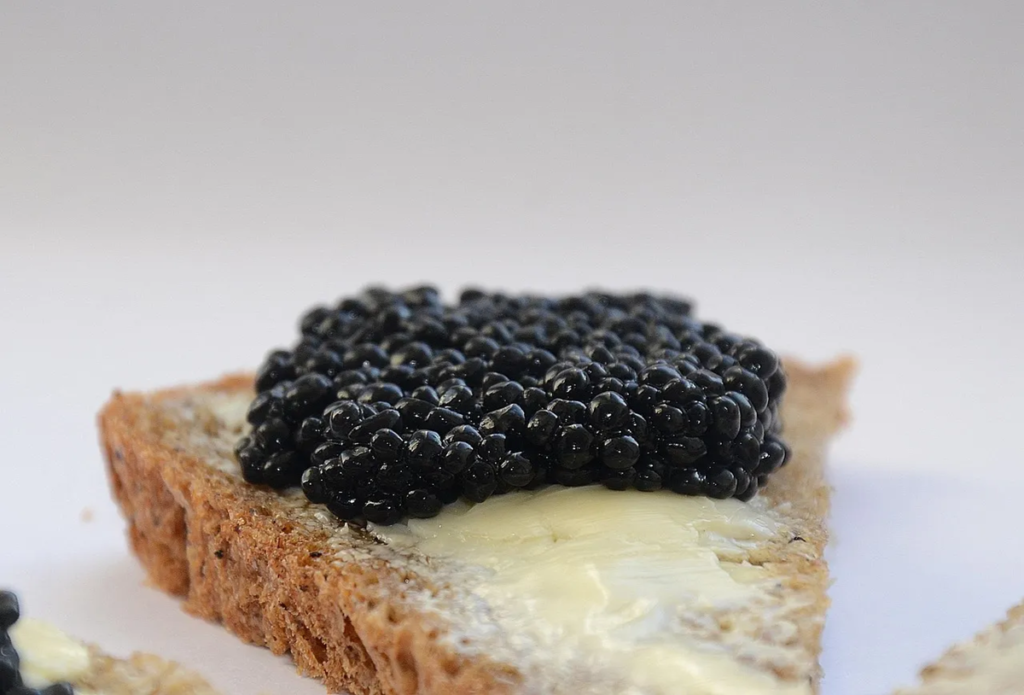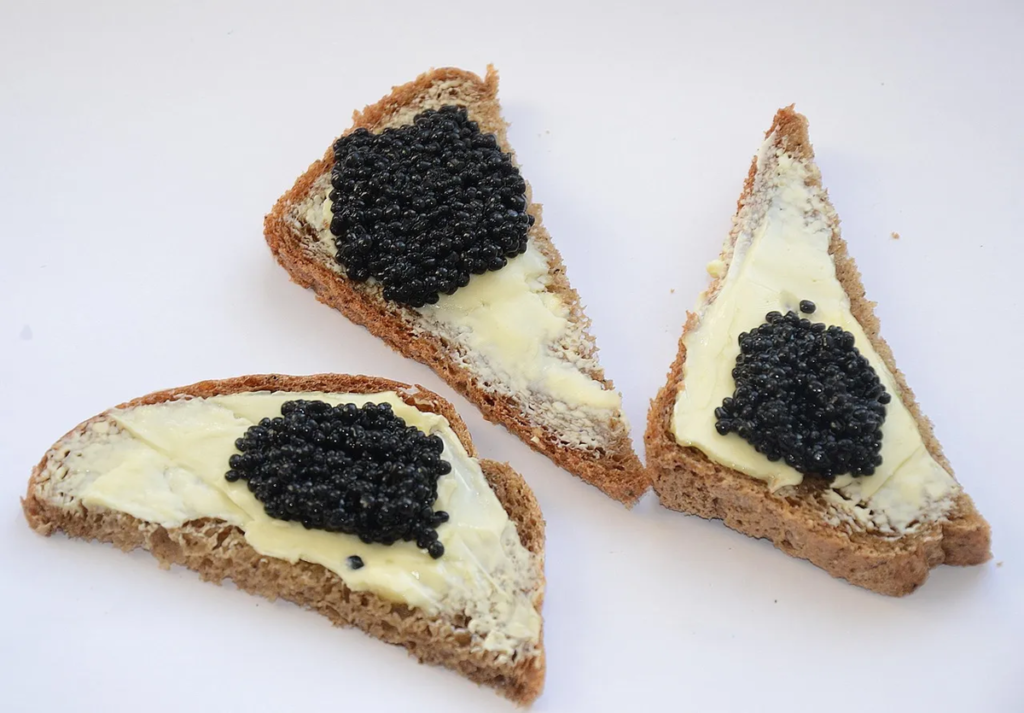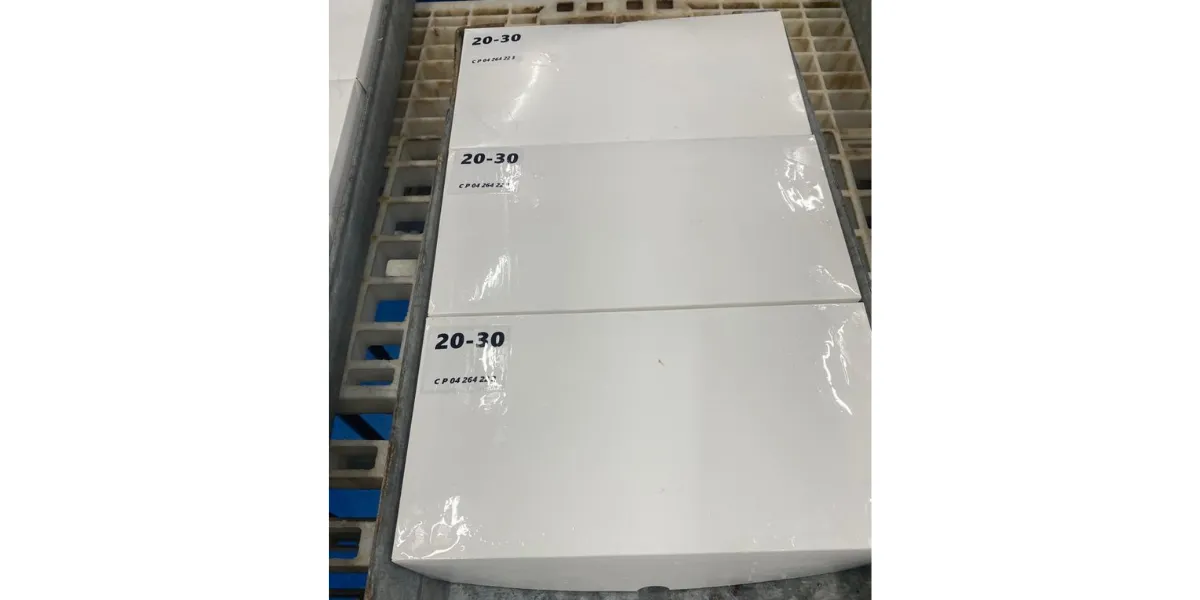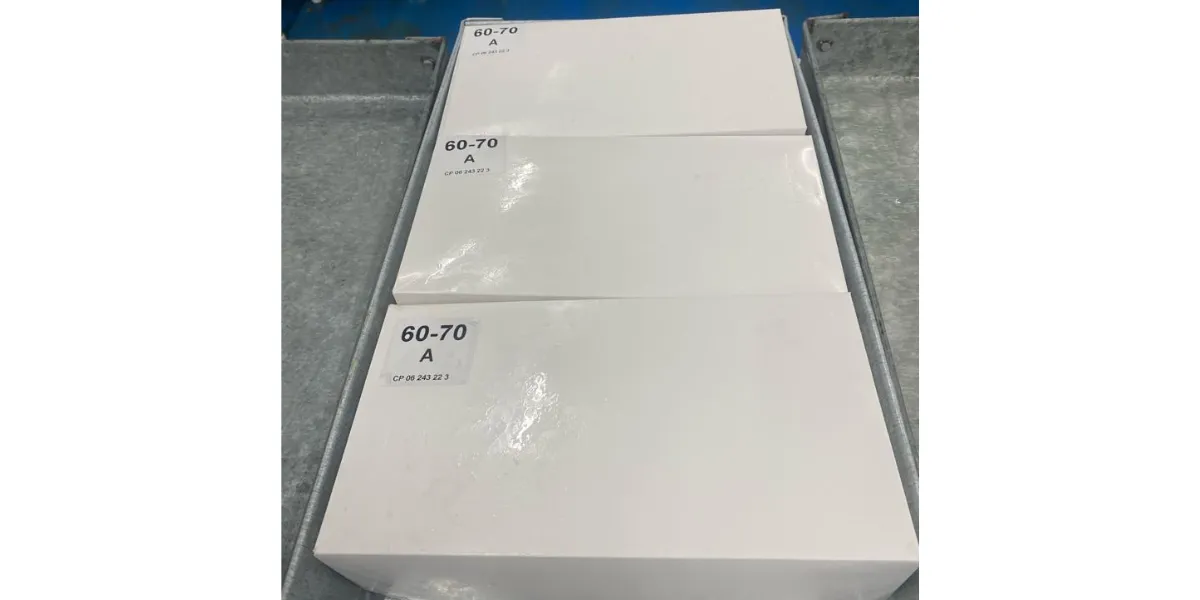Caviar is a luxury delicacy that demands precision in selection. Whether you are a distributor, retailer, or gourmet supplier, identifying high-quality caviar is essential for maintaining credibility and customer satisfaction. The global caviar market, valued at over $560 million in 2023, continues to grow, making product differentiation crucial.
Premium caviar is characterized by species origin, egg texture, freshness, and proper storage conditions. According to a study by the World Sturgeon Conservation Society (WSCS), authentic caviar should meet strict sustainability and grading standards to ensure both quality and ethical sourcing.
Understanding Caviar Grades: What Defines Quality?
Caviar grading is an essential process that determines the market value and consumer perception of the product. The grading system is based on several factors, including egg size, texture, color, and processing method.
1. Key Grading Factors
- Egg Size: Larger eggs (3.5mm or more) are typically considered higher quality, with Beluga caviar leading in size.
- Color: Premium caviar ranges from silver-gray to golden amber, with lighter hues often indicating a more refined taste.
- Texture: High-quality caviar has firm, intact eggs that gently pop in the mouth.
Processing Method: Malossol (low-salt) caviar, with less than 5% salt content, retains the most natural flavor.
2. Scientific Analysis of Caviar Quality
A study published in the Journal of Food Science & Technology in 2021 tested different caviar grades based on consumer preference and texture analysis. Results indicated that caviar with a fat content above 12% and a moisture level below 50% had the most desirable texture and taste.
3. Why Grading Matters for Businesses
- Pricing & Marketability: Higher-grade caviar commands premium prices, increasing profit margins.
- Consumer Trust: A clear grading system builds confidence in the authenticity of the product.
- Regulatory Compliance: Many international markets require specific grading standards for import and export.
Understanding caviar grades ensures that businesses offer only the best to their customers. By mastering these classifications, suppliers can enhance their reputation and meet global demand.
The Role of Sturgeon Species: Why Does It Matter?
The species of sturgeon plays a crucial role in caviar quality. Different species yield caviar with varying textures, flavors, and market values.
Major Sturgeon Species in Caviar Production
- Beluga (Huso huso): Produces the largest eggs, with a creamy, buttery texture. Considered the most luxurious.
- Osetra (Acipenser gueldenstaedtii): Known for its nutty, complex flavor, often golden or dark brown.
- Sevruga (Acipenser stellatus): Small, firm eggs with a pronounced briny taste. More affordable but still premium.
- Sterlet (Acipenser ruthenus): Produces smaller eggs, often used in traditional European markets.
Appearance & Texture: Visual and Tactile Clues of Premium Caviar
Visual and textural analysis is one of the most reliable ways to identify high-quality caviar. Expert caviar testers rely on both appearance and physical consistency to evaluate quality.
1. Key Indicators of High-Quality Caviar
- Egg Integrity: Premium caviar consists of whole, unbroken eggs that maintain shape under slight pressure.
- Gloss & Luster: A natural sheen indicates proper preservation, while dull or dry eggs suggest poor quality.
- Consistency: High-quality caviar should have a firm yet delicate pop when pressed lightly between the tongue and the roof of the mouth.


2. Scientific Methods for Caviar Texture Evaluation
A research study from the Food Quality and Preference Journal in 2022 used rheological analysis (study of texture and flow) to measure caviar firmness. The study confirmed that properly processed Osetra and Beluga caviar had a firmness index above 80%, while lower-quality caviar scored below 60%, indicating potential over-processing or extended storage.
3. Business Benefits of Prioritizing Texture & Appearance
- Customer Experience: Consumers associate glossy, firm eggs with high quality, leading to better reviews and repeat purchases.
- Differentiation in the Market: Premium appearance and texture give brands a competitive advantage.
- Extended Shelf Life: Properly processed caviar with firm eggs resists premature degradation.
By mastering visual and textural analysis, businesses can confidently select and market high-quality caviar, ensuring customer satisfaction and brand credibility.
Smell & Taste: The Sensory Test for Authenticity
The aroma and flavor of caviar are among the most critical indicators of its quality. Experts use sensory evaluation techniques to distinguish high-grade caviar from subpar or counterfeit products.
1. Key Sensory Characteristics of High-Quality Caviar
- Mild Oceanic Scent: Premium caviar should have a fresh, clean aroma with subtle sea notes, never overpoweringly fishy.
- Buttery, Nutty, or Creamy Taste: High-end Osetra and Beluga caviar are known for their complex, nutty, and buttery flavors.
- Balanced Salinity: High-quality caviar has a delicate balance between salt and natural umami flavors without excessive saltiness.
2. Scientific Insights on Caviar Flavor
A 2021 study in the Journal of Sensory Studies analyzed the volatile compounds in various caviar types. The research found that premium caviar contains more omega-3 fatty acids, which contribute to a richer taste, while lower-quality caviar often has higher oxidized lipids, leading to an off-putting fishy aroma.
3. How Businesses Can Use Sensory Testing
- Authenticity Verification: Sensory checks help prevent the distribution of mislabeled or low-grade products.
- Customer Experience Optimization: Luxury buyers expect specific flavor profiles, and maintaining consistency builds trust.
- Storage & Handling Impact: Proper refrigeration (between -3°C to 2°C) ensures optimal taste preservation.
By mastering smell and taste evaluations, distributors can ensure that only the finest caviar reaches their customers.
Color Variations: Does the Shade Affect Quality?
Caviar’s color is a major factor in its classification and market value. While color does not always indicate quality, certain hues are associated with specific flavor profiles and price points.
1. Common Caviar Colors and Their Significance
- Jet Black (Sevruga, Siberian Sturgeon): Often has a bold, briny taste with a firmer texture.
- Dark Brown to Golden (Osetra): Nutty and complex flavors, often the most sought-after shade.
- Pale Gray to Silvery (Beluga): The rarest and most expensive, with a smooth, buttery texture.
- Golden Almas (Albino Sturgeon): One of the most luxurious caviars, sometimes selling for over $25,000 per kilogram.
2. Scientific Findings on Color and Quality
According to a 2022 study published in Aquatic Food Science, color variation in caviar is influenced by the sturgeon’s diet, water conditions, and genetic factors. The study also found that lighter Osetra caviar had higher lipid content, leading to a richer flavor.
3. Business Considerations for Color Selection
- Premium Pricing Strategy: Lighter caviar colors often command higher prices due to rarity.
- Market Preferences: Asian and Middle Eastern buyers favor golden Osetra, while European markets prefer darker shades.
- Consumer Education: Providing information about color and taste profiles can improve customer purchasing decisions.
By understanding color variations, businesses can better cater to market demands and optimize pricing strategies.
Packaging & Labeling: Hidden Clues to Spot Genuine Caviar
Packaging plays a crucial role in preserving caviar quality and verifying authenticity. Proper labeling ensures compliance with industry standards and helps prevent counterfeit sales.
1. Key Packaging Features of High-Quality Caviar
- Airtight, Vacuum-Sealed Tins: Prevents oxidation and extends shelf life.
- Glass Jars with Minimal Air Exposure: Helps preserve aroma and texture.
- Tamper-Proof Seals & Serial Numbers: Indicate authenticity and regulatory compliance.
2. CITES Certification and Legal Compliance
The Convention on International Trade in Endangered Species (CITES) mandates that all legally sourced caviar must have a tracking code, specifying:
- Species name
- Country of origin
- Processing plant code
- Harvest year
The Spoon Test: How to Properly Examine Caviar at Home
The spoon test is a simple yet effective way to evaluate caviar’s freshness, texture, and quality without advanced lab testing.
How to Perform the Spoon Test
- Use a Non-Metallic Spoon: Metal can alter the taste; use mother-of-pearl, plastic, or wooden spoons.
- Check the Egg Consistency: Gently press the caviar against the spoon. High-quality eggs should be firm and pop lightly.
- Observe Oil Release: Excessive oil leakage indicates poor processing or aging.
Storage & Freshness: Why Proper Handling is Crucial?
Storage conditions directly affect caviar quality, shelf life, and flavor retention.
1. Ideal Storage Conditions
- Temperature: Keep at -3°C to 2°C (26°F to 36°F) to maintain freshness.
- Avoid Oxygen Exposure: Oxidation degrades flavor; always use airtight containers.
- Consume Within 48 Hours After Opening: Opened caviar quickly loses texture and aroma.
2. Scientific Findings on Caviar Shelf Life
A 2021 study in Food Preservation & Packaging showed that vacuum-sealed caviar stored at -3°C retained 95% of its original texture after six months, whereas improperly stored caviar lost 30% of its firmness within three weeks.
3. Business Best Practices
- Strict Cold Chain Management: Ensures consistent quality in transit.
- Educate Buyers on Storage: Provide handling guidelines with every purchase.
- Rotate Stock Efficiently: Sell older inventory first to maintain freshness.
Proper storage and handling directly impact product reputation and repeat business.
Fake vs. Real Caviar: How to Avoid Common Scams?
Counterfeit caviar is a growing issue in global markets, often involving mislabeled fish roe or artificially enhanced products.
1. Common Fraudulent Practices
- Imitation Caviar: Dyed lumpfish or salmon roe sold as “sturgeon caviar.”
- Over-Salted Low-Quality Eggs: Used to mask poor freshness.
- Fake “Beluga” Claims: Many products labeled as Beluga caviar are actually hybrid species.
2. Scientific Testing for Authenticity
DNA analysis, as confirmed by a 2022 study in Aquatic Genetics, can accurately verify sturgeon species with 99.8% accuracy.
3. How Businesses Can Combat Fake Caviar
- Work with Certified Suppliers: Only buy from reputable, licensed producers.
- Implement Traceability Systems: Track sourcing from farm to retail.
- Educate Consumers: Transparency builds long-term trust and credibility.
Recognizing fake caviar protects brands from legal and financial risks.
Sustainable & Ethical Sourcing: Why It Matters for Quality?
Sustainability in caviar production ensures long-term industry viability.
1. The Importance of Ethical Sourcing
- Preserving Sturgeon Populations: Over 85% of wild sturgeon species are endangered.
- Higher Quality from Farmed Caviar: Controlled environments produce superior eggs.
2. Business Advantages of Sustainable Practices
- Meets Global Regulations: CITES compliance is mandatory for international trade.
- Consumer Demand: Ethical sourcing appeals to high-end buyers.
By investing in sustainable sourcing, companies protect both their reputation and the future of the industry.
Final Thought: Ensuring Excellence in Caviar Selection
Caviar quality is not just about luxury; it’s about precision, authenticity, and sustainability. Businesses that master the art of selecting premium caviar gain a competitive edge in a growing market.
Scientific research confirms that factors like egg integrity, salinity levels, and species authenticity significantly impact consumer preferences. A 2022 study by the European Food Research Institute found that Beluga caviar with a salt content of 3-5% and a firm, glossy texture ranks highest among global buyers. Additionally, regulatory certifications such as CITES (Convention on International Trade in Endangered Species) ensure legal compliance and responsible sourcing.
Market trends indicate that customers are becoming increasingly aware of counterfeit caviar, which makes transparency and quality assurance more important than ever. By understanding key grading factors, businesses can offer premium caviar that meets global standards.
For suppliers and distributors, ensuring that every tin of caviar meets rigorous criteria is the key to long-term success. Follow these guidelines to enhance your product quality and strengthen your market presence.




